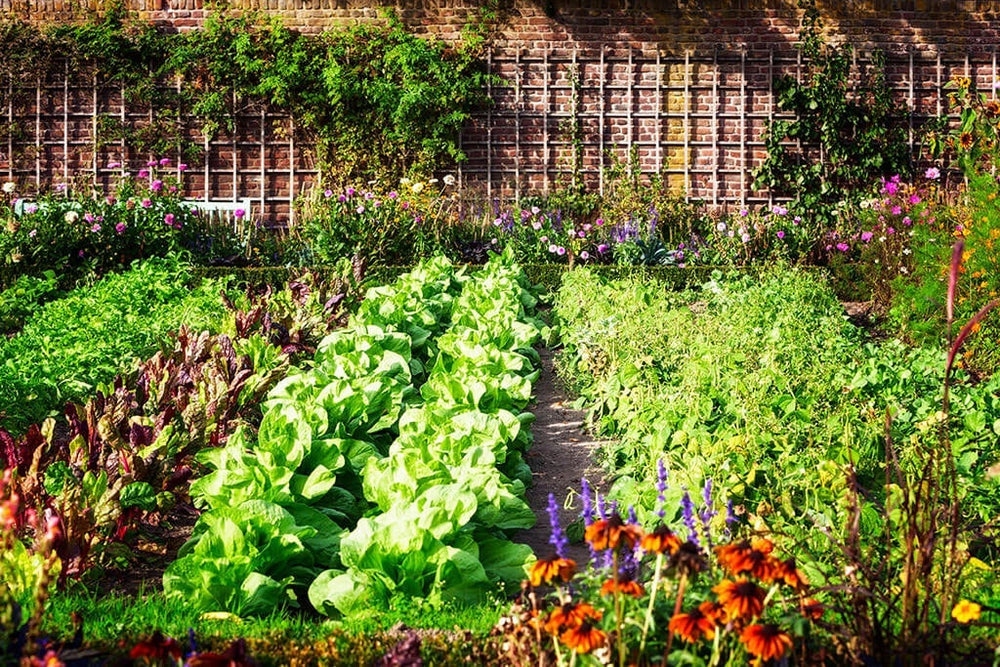Plants need more than a beautiful planting plan to thrive. Here's how to give edibles what they need to produce a gorgeous garden design and a big harvest.
- Make the most of the sun. Most vegetables and many herbs need six to eight hours of sun (or more) every day, so make sure you take that into account when choosing where to plant. A garden that receives sun from 9 A. M. to 3 P. M. or longer is ideal. If your only choice is to plant in the shade, fill your garden design with leafy greens (think lettuce, kale, collards) and herbs like parsley or thyme, which can get by just fine on just a few hours of sunlight.
- Consult the compass. The south side of the house usually receives more year-round sun than any other side, so plant there if you can. If that direction is blocked by trees or shaded by nearby structures, the east or west sides are good second choices.
- Move away from the house. Keep plants at least six feet away from your home to avoid shadows cast by walls. Go further if the house is two stories.
- Stay clear of trees. Aside from casting shade, they make digging difficult and will compete with your garden for nutrients.
- Plant near a water source. When possible, situate your garden design within a hose's length of the nearest spigot. Any farther away and you'll end up schlepping water by hand – and who wants to do that?
- Be sure the site drains well. You don't want roots to rot in soggy soil, so good drainage is key.
- Terrace if needed. A gentle slope is okay, but if the site slopes more than 5 feet over a distance of 50 feet (in other words, greater than a 10 percent slope), erosion will be a problem. Terrace the garden or include a series of raised beds in your garden design to make use of the slope.
- Aim for good air circulation. When air is able to move freely, foliage will dry faster, and there will be less chance of disease.
- Choose the right fencing. If the garden is screened for privacy or to keep animals out, choose a style that allows good air movement, but does its job as well. Pickets, lattice, and hedges add charm. Tall brick walls are lovely, but if the space is small, plants may suffer from a combination of radiating heat (from the wall) and lack of air movement. Deer fencing is often a must for a home garden where the four-legged browsers may be your biggest pests.
- Dial 811 before you dig. Utility companies will usually share the location of their lines free of charge. It's also a good idea to note placement of the septic tank or sewer lines, so you know where not to plant.
Article written by Rebecca Reed.






 Herbs
Herbs
 Vegetables
Vegetables
 Fruit
Fruit
 Flowers
Flowers
 Succulents
Succulents


